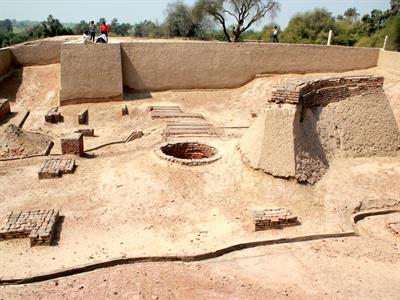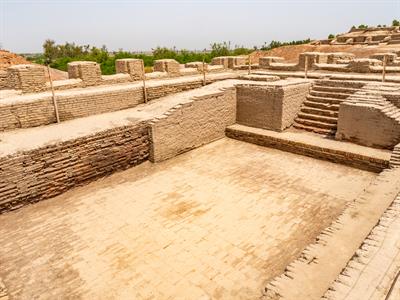
PUMPA - SMART LEARNING
எங்கள் ஆசிரியர்களுடன் 1-ஆன்-1 ஆலோசனை நேரத்தைப் பெறுங்கள். டாப்பர் ஆவதற்கு நாங்கள் பயிற்சி அளிப்போம்
Book Free DemoThe city of Mohenjo-Daro was the most established, with impressive urban planning. When the Indus civilization fell into disarray around 1900 BCE, this site was abandoned. The name Mohenjo-Daro is derived from the expression "the mound of the dead." The significance of this site was first recognized in 1922, one year after Harappa was discovered. Following excavations, it was discovered that the mounds contain the ruins of the Indus civilization's largest settlement.

The Indus civilization is also known as the Harappan civilization,
after its type site, the first of its sites to be excavated in the early 20th century.
The Harappan civilization, or Indus Valley Civilization, was the first to establish an accurate system of standardized weights and measures. Terracotta, bronze, and stone were used to produce sculpture, seals, pottery, and jewellery by the Harappans.
Urban planning
More than 5 million people lived in the Indus Valley Civilisation. The Indus cities are best known for their urban planning, technical advancements, and political advancements through land and urban design. Harappans used the standard-sized bricks and weights also in other Indus cities such as Mohenjo-Daro and Dholavira.
These cities are perfectly planned with wide streets, public and private wells, properly planned drainage systems, bathing platforms and reservoirs. One of the most well-known structures of Indus cities is the Great bath of Mohenjo-Daro.
These cities are perfectly planned with wide streets, public and private wells, properly planned drainage systems, bathing platforms and reservoirs. One of the most well-known structures of Indus cities is the Great bath of Mohenjo-Daro.

Archaeological UNESCO World Heritage View of Great Bath
Mohenjo Daro